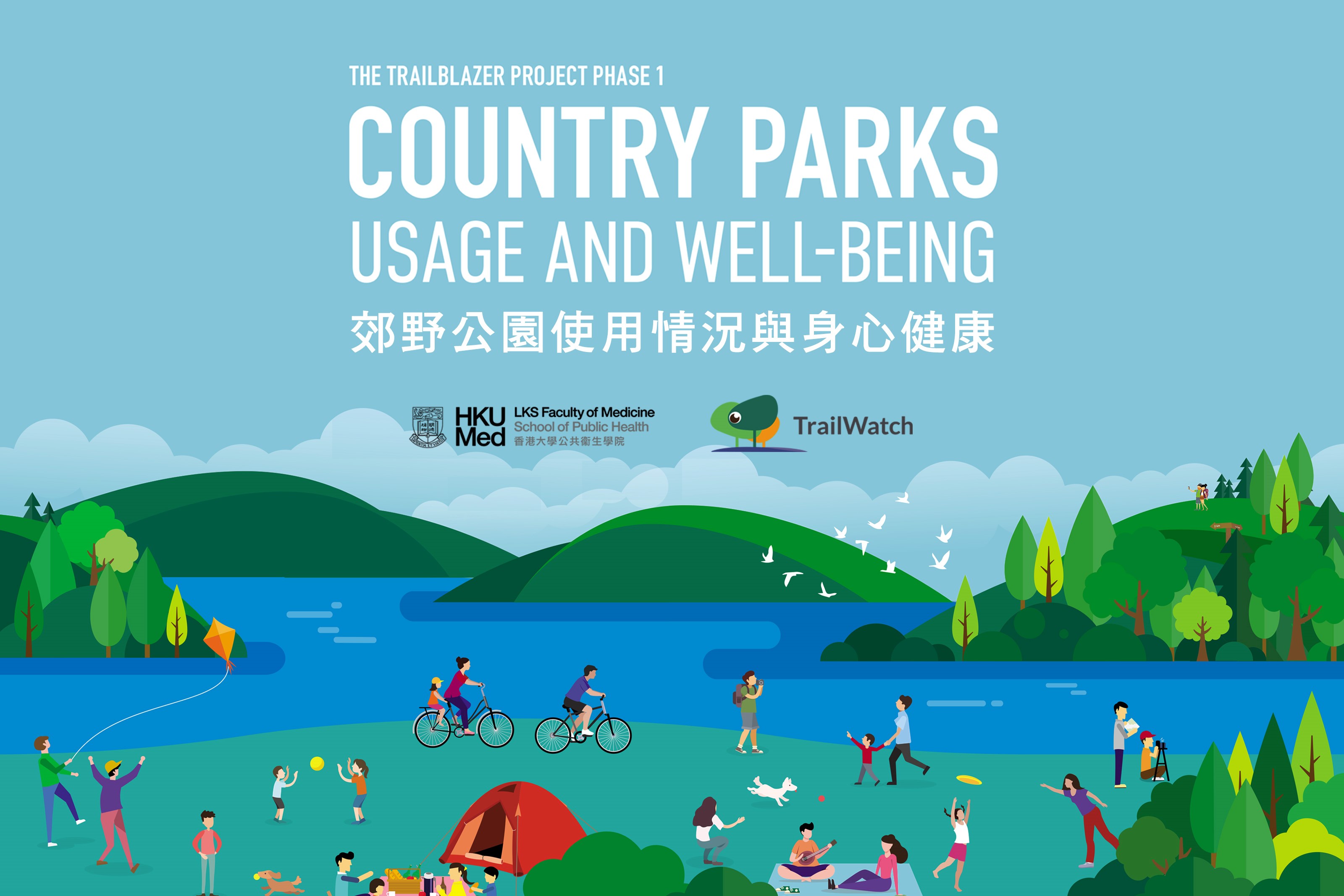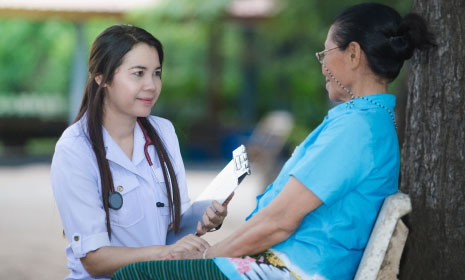HKU Trailblazer Project finds country parks linked to an active and healthy lifestyle
Background
Hong Kong designated 40% of its landmass as country parks, a figure that has been hailed as the highest among major cities. The Trailblazer Project Phase 1, a collaboration between the FAMILY Cohort of the School of Public Health, the LKS Faculty of Medicine at The University of Hong Kong (HKUMed)1 and the TrailWatch project of WYNG Foundation, seeks to assess country park usage and its link with the “3Hs”: health, happiness, and harmony in a territory-wide survey of 1,011 Hong Kong citizens.
Research methods and findings
Among all respondents, 56.1% of them visited country parks at least once in the past year. Sai Kung District (68.7%), (Hong Kong Island) Eastern District (66.8%), and Tsuen Wan District (63.0%) have the highest percentage of country park users. Hiking, leisure walk, and barbeque are among the most common activities in country parks. Almost half of the country park users (47.0%) hiked in their last country park visit, and they hiked for almost 2.5 hours on average, fulfilling the World Health Organization’s recommendation of 150 minutes of weekly physical activity in one setting.2 Over 80% of the respondents found country parks to be important to their life. The top three reasons respondents cited for visiting the country park are good scenery, visit arrangements by others, and convenient transport. The lack of time, interest, and companions are the major barriers why country park non-users did not visit country parks.
Demographic and well-being comparisons were made between country park users and non-country park users. Compared to non-users, country park users tended to be young male and have a higher household income. Preliminary analyses suggest that country park users had better self-reported health than non-users.
The survey results collected in the current study were compared with onsite visitor surveys conducted between 1982 and 1991 and the General Household Survey conducted by the government in 1990.3,4 In 2018, 32.9% of our respondents visited country parks in the past three months, which was 2.6 times more than the number recorded in 1990 (12.7%). Although hiking, leisure walk, and barbeque remained the most popular activities during country park visits over the decades, the percentage of country park users who hiked increases nearly four-fold (12.6% in 1982-1991 to 47.0% in 2018) while the popularity of barbeque dwindles (40.6% in 1982-1991 and 11.0% in 2018). This suggested that Hong Kong people have been switching from more sedentary activities to more active ones when visiting country parks.
Arrangement by others became a more popular reason for visiting country parks in 2018 (28.3%) than in 1982-1991 (8.0%), and the lack of companion is a growing concern among non-users in 2018 (18.5%) than in 1982-1991 (4.5%). The survey results reflected that Hong Kong citizens are increasingly using country parks as a natural green environment for hiking, where the average hike would fulfil the WHO’s recommended level of weekly physical activities. Hiking trips planned by either friends and families or social organizations may be a viable method to connect the city-dwellers with the nature.
Significance of the study
The study offers an updated overview of country park usage in Hong Kong since 1991.3,4 The research team is also among the first to investigate the relationships between patterns of country park visits and health, happiness, and family harmony. TrailWatch, the project partner, is focused on promoting nature conservation and hiking in Hong Kong. The Trailblazer Project team expects that the study would provide useful data for the government when developing relevant policies on country parks, including management, facilities and public education.
With the upcoming Trailblazer Project Phase 2, which is due to launch in the format of household face-to-face interviews in 2020, the researchers aim to achieve the goals of providing an in-depth and comprehensive analysis of the role of country parks in the wellbeing of the population and ultimately formulating evidence-based health promotion strategies.
About the research team
The study was led by Dr Felix Cheung, Research Assistant Professor, and Dr Michael Ni, Clinical Assistant Professor and Programme Director of the FAMILY Cohort in the School of Public Health at HKUMed. The ‘Trailblazer Project’ is exclusively supported by WYNG Foundation.
References
1. Leung GM, Ni MY, Wong PT, Lee PH, Chan BH, Stewart SM, et al. Cohort profile: FAMILY Cohort. Int J Epidemiol. 2017 01;46(2):e1. DOI: 10.1093/ije/dyu257
2. World Health Organization. Global strategy on diet, physical activity and health: physical activity and adults [Internet]. Geneva (CH). [cited 2018 Dec 18]. Available from: https://www.who.int/dietphysicalactivity/factsheet_adults/en/
3. Wong F. Recreational use of Hong Kong country parks: an analysis of patterns and demand [Internet]. Pokfulam (HK): The University of Hong Kong; 1997. Available from: http://hdl.handle.net/10722/35170
4. Census and Statistics Department. Social data collected by the General Household Survey: special topics report No.VI [Internet]. Hong Kong (HK): Census and Statistics Department; 1990. Available from: https://www.statistics.gov.hk/pub/hist/1981_1990/B11301061990XXXXE0100.pdf
Click here for the full report
Download Presentation Slides









.png)
